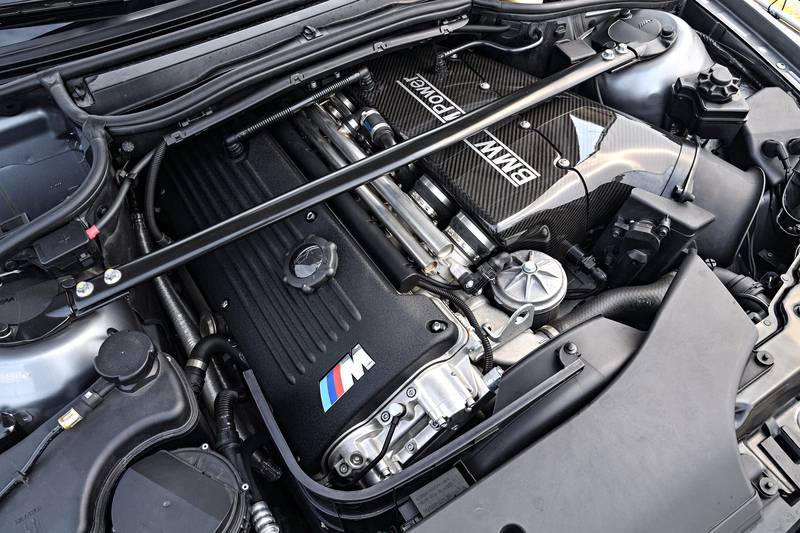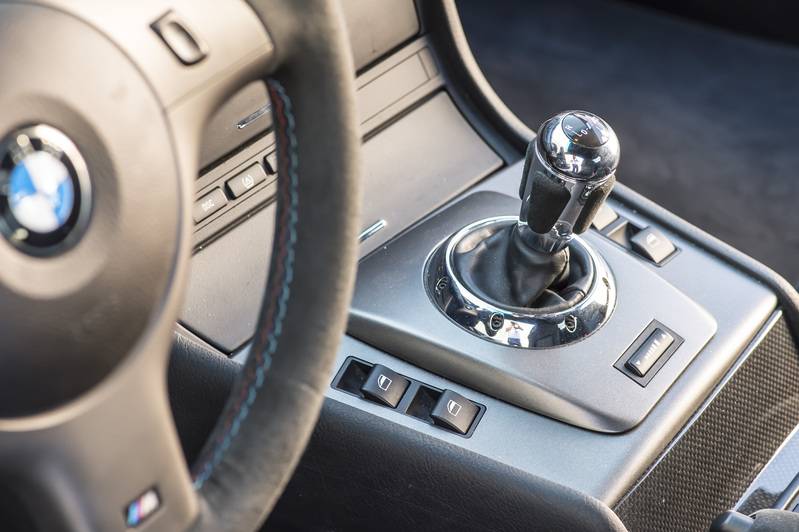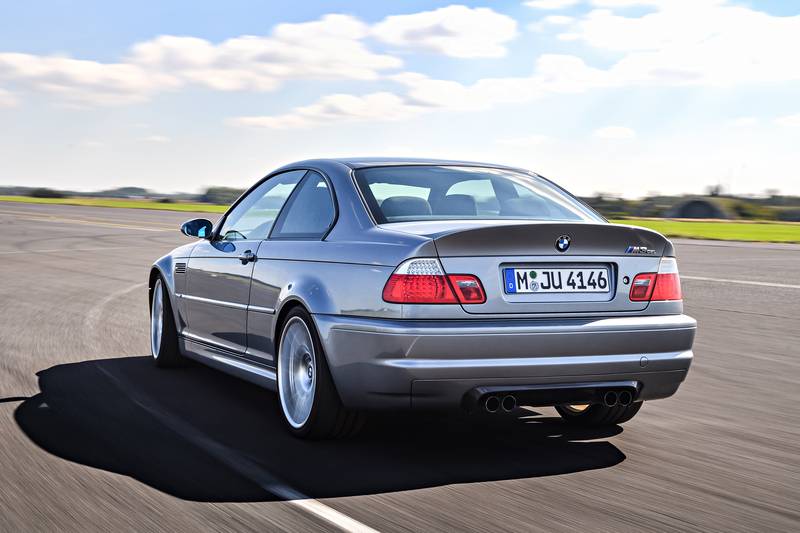A lighter load: The BWW M3 CSL had a carbon-fibre roof, an aluminium bonnet and a rear window made from thinner glass, which were among the elements that ensured it weighed 110kg less than its counterparts.
This year has given us one of the most iconic sports cars of the past two decades, the BMW M3 CSL. We look back at what has made the CSL such a focused and lightweight version of the already accomplished M3.
CSL — coupé sport lightweight — is an acronym that carries reverence and gravitas among Beemer and motorsport fans as those three letters were first seen on a 3.0 CSL dubbed the Batmobile.
The moniker has since been used twice, most recently on the M4 CSL. However, for many enthusiasts, the CSL nomenclature was arguably more resonant in the 2003 E46 M3 CSL, considered in some circles to be one of BMW M’s greatest cars. And we at M&G motoring tend to agree with that.
You see, 20 years ago, the Munich-based marque devised a plan to build just 1 383 units of the lighter E46 M3, of which only 65 found homes in sunny Mzansi. It remains a rare sight on our roads but there is more to the M3 CSL than meets the eye.
 The BMW M3 CSL’s 3.2-litre straight-six engine, which pushed out 265kW and 370Nm, was revolutionary for its era.
The BMW M3 CSL’s 3.2-litre straight-six engine, which pushed out 265kW and 370Nm, was revolutionary for its era.
 The manual gearbox sparked some controversy. (Barry Hatden)
The manual gearbox sparked some controversy. (Barry Hatden)
At the time, it cost a massive R940 000 — R400 000 more than the E46 M3 — which had many scratching their heads at the considerable difference in cost between the two derivatives.
Looking back at the astronomical price that the M3 CSL commanded, and still does today, there seems to have been method in the madness. So, what made the vehicle special?
The E46 M3 was already on its way to iconic status, thanks to one of the sweetest 3.2-litre straight-six engines of that era, delivering 252kW and 365Nm, which were benchmark numbers at the time.
The 265kW and 370Nm seemed a paltry power hike from the standard M3 but the trick was in the CSL’s diet, which saw it come in 110kg lighter.
This was achieved in several ways, including the pioneering carbon- fibre roof and the carbon composite materials used in the diffuser, front splitter and interior door panels.
Meanwhile, the bonnet was hewn from aluminium, the rear window had thinner glass, the boot floor was lighter and the lighter boot lid had that signature integrated lip.
The front seats were bucket-type, fixed units — the radio and aircon could be deleted but most SA-bound CSLs, due to our hot climate, came with the aircon option as standard.

Overall kerb weight, as a result, came down to 1 385kg.
The cabin was festooned with that velvety Alcantara material at a time when very few, if any, exotics used it.
Under the bonnet, the S54 3.2-litre straight-six achieved more power via upgraded camshafts and valves.
At the same time, the carbon-fibre airbox brought further lightness and endowed the model with that signature induction noise that must be experienced for it to be fully appreciated.
Performance-wise, the CSL was 0.3 seconds quicker to 100km/h with a time of 4.9 seconds, while the top speed was still limited to 250km/h, although this could be lifted to 280km/h if you came to your dealer with a racing licence in hand.
The CSL was presented in only two exterior colours, Sapphire Black and Silver Grey. You could easily identify the model from the front by the unique “porthole” on the right side of the valance, which channels air to that glorious carbon-fibre airbox.
Another unique feature was the 19-inch CSL wheels, later featured on the 2005 Competition Pack M3 models.
One of the contentious items on the CSL was its SMG (sequential manual gearbox), which was the exclusive transmission for the model and offered decidedly jerky gear changes in normal mode but was more responsive when driving at full tilt.
It also introduced Drivelogic, which alters the ferocity of the gear changes by using a toggle switch with five modes, from “soft” to “bang-your-head-against-the-headrest” fury.
Tyres were of the semi-slick variety, which offered tenacious grip levels once up to temperature but were not conducive to inclement weather as aquaplaning was a snip away.
Of course, tyre technology has become better over the years and many M3 CSL owners now use a milder tyre compound, which offers the best of both worlds.
The current M4 CSL has elevated performance to yet another level and remains an impressive bastion of the CSL nameplate.
However, it is the E46 M3 CSL that remains etched in enthusiasts’ hearts, the one that pushed the motorsport envelope on a road-going car that, even two decades later, remains a well sought-after model among collectors that will probably hold its value for years to come.